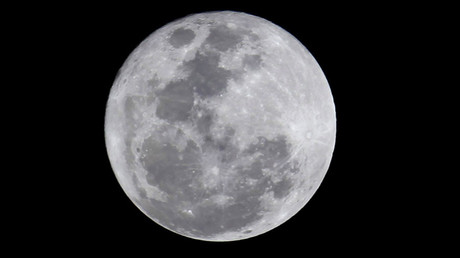Water may be widespread on the moon after all – new research
Water on the moon is widespread across its surface and appears to be present at all times of the lunar day, according to a new analysis of two lunar missions.
The new evidence contradicts previous research suggesting water was confined to certain areas and depended on lunar days. “We find that it doesn’t matter what time of day or which latitude we look at, the signal indicating water always seems to be present,” said Joshua Bandfield, a senior research scientist with the Space Science Institute in Boulder, Colorado, and lead author of a new study published in Nature Geoscience.
“The presence of water doesn’t appear to depend on the composition of the surface, and the water sticks around,” he added. It’s hoped the results will lead to a greater understanding of the origins of the moon’s water and offer insight into how it could be used as a resource.
It’s not yet clear how accessible the water supply is but if it is convenient to reach it could be used as a drinking water for future explorers or converted to use for rocket fuel, NASA said in a statement.
Water, water, everywhere, but is there a drop to drink? Data from 2 lunar missions finds evidence that the Moon’s water is widely distributed across the surface. If the Moon has enough accessible 🌊, it could be an essential resource to future explorers: https://t.co/4NuyjtO4uSpic.twitter.com/VlkTTKJqcp
— NASA (@NASA) February 24, 2018
Earlier studies suggested that more water was detected at the moon’s polar latitudes and that the strength of the water signal waxes and wanes according to the lunar day. However, these analyses depended on remote-sensing instruments which were challenged by the mixture of reflected and emitted light. For this latest examination, Bandfield and his team created a new model to incorporate temperature information for more accurate results.
Their results showed widespread and relatively immobile water indicating that it may be present primarily as hydroxyl (OH), a more reactive relative of H2O that is made of one oxygen atom and one hydrogen atom. It also suggests that any H2O present on the moon isn’t loosely attached to the surface.
“By putting some limits on how mobile the water or the OH on the surface is, we can help constrain how much water could reach the cold traps in the polar regions,” said Michael Poston, of the Southwest Research Institute in San Antonio, Texas.
Discussions are still continuing among researchers about what exactly these new findings reveal about the source of the moon’s water. One theory is that the water is created by the solar wind hitting the lunar surface; however, the team hasn’t ruled out the possibility that the moon itself could be the source. It is conceivable that the water could be slowly released from deep inside minerals, where it has been locked since the moon was formed, NASA stated.
“Some of these scientific problems are very, very difficult, and it’s only by drawing on multiple resources from different missions that are we able to hone in on an answer,” said NASA scientist John Keller.
If you like this story, share it with a friend!






Comments are closed.